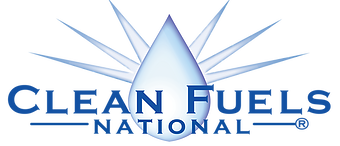With Hurricane Irma heading toward Florida, many are bracing for damaging winds and heavy

rainfall. Flooding is inevitable, but the EPA has released a guide to help minimize damage to underground fuel storage tank systems. As always, Clean Fuels National is standing by to assist our customers.
The four main threats to a UST system from flooding are buoyancy, erosion, product displacement and electrical system damage. The rising water levels in the soil have been known to offset the restraining force of pavement and hold-down straps, resulting in a tank that actually lifts out of the ground, rupturing pipes and releasing product.
The extreme rainfall can cause rapidly moving water, leading to soil erosion above and surrounding the UST, making it more vulnerable to damage. The shifting soil can also shift and break away, resulting in product release.
When extreme rainfall occurs, it becomes inevitable that water enters sumps and it becomes

possible for water to enter the tank. As more and more water enters the tank, fuel can be pushed up and out of the tank, again resulting in product release.
Lastly, extended contact with water can cause electrical equipment associated with the tank – such as ATG systems, STP motors, emergency shut-off switches, etc.
To help prevent UST displacement and water infiltration, the EPA recommends tank owners take certain precautions if there is immediate danger of flooding, such as turning off all electricity to the tank system, taking product readings to determine a release occurs as a result of flooding, secure all tank access points and filling the tank to weigh it down. Additionally, tank owners and operators should inspect the seal on spill bucket plungers, lose the shear valve on pressurized pipes and temporarily cap off the vent pipes to prevent water from entering the tank. Finally, the EPA recommends placing a dumpster or similar large, heavy container over the UST to reduce the risk of the tank rising out of the ground.
After the flooding, when water has receded, the EPA recommends the following steps to help owners and operators get their tanks back into service safely. Firstly, ensure the power is off to the system. Determine if product has leaked and if water or debris has infiltrated the tank. If the

electrical system is intact, return power to the system. Check the release detection equipment, clean all sumps, including the ones under the dispensers, and check the piping and fittings for any leaks or damage.
Additionally, A UST system tightness test should be performed before adding any more product. Spill buckets and sumps need to be tested for tightness and cathodic protection needs to be tested.
For more information on what to do if a tank is damaged from flooding, check out the EPA file, available here: https://www.epa.gov/sites/production/files/2014-03/documents/ustfloodguide.pdf
Clean Fuels National is proud to be a resource for our customers. For any help with your UST system, please feel free to contact us at 260-346-2500. We will be happy to assist you in finding the answers you need!























